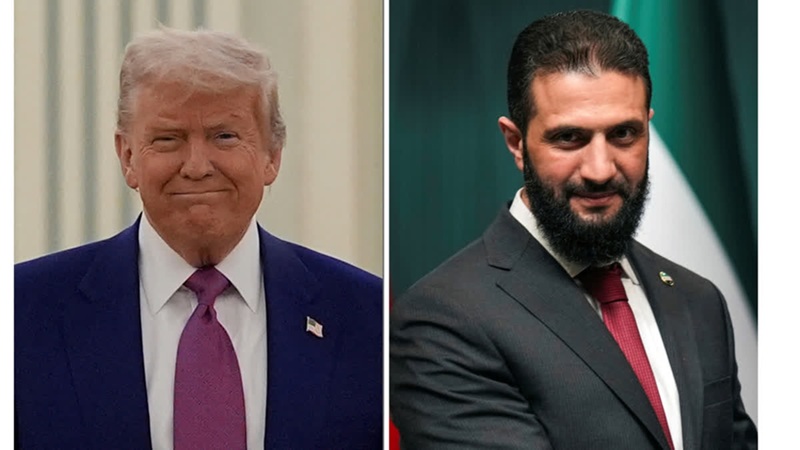In a dramatic shift in U.S. foreign policy, President Donald Trump has officially lifted all sanctions on Syria, marking a potential turning point in the country’s long-standing isolation from the international community. The announcement came on May 13, 2025, during Trump’s visit to Saudi Arabia, where he also held a landmark meeting with Syria’s new leader, President Ahmed al-Sharaa. This development not only signals a thaw in relations between Washington and Damascus but also sets the stage for broader regional changes that could reshape alliances and strategies in the Middle East.
Background: Years of U.S. Sanctions on Syria
U.S. sanctions on Syria were first introduced in the late 1970s but became more comprehensive in the early 2000s. In 2004, under the Syria Accountability and Lebanese Sovereignty Restoration Act (SALSA), President George W. Bush imposed economic sanctions targeting Syria’s support for terrorism, occupation of Lebanon, and alleged pursuit of weapons of mass destruction. Over the years, the sanctions regime was expanded significantly, especially during the Syrian Civil War that erupted in 2011.
Under President Barack Obama, sanctions were intensified in response to the Assad regime’s violent crackdown on protesters and widespread human rights abuses. These included financial restrictions on Syrian government officials, business entities, and institutions. The Caesar Syria Civilian Protection Act of 2019, enacted under President Trump’s first term, further tightened restrictions, penalizing individuals and businesses that supported the Assad regime, especially in construction, energy, and military sectors.
By 2020, these sanctions had deeply isolated Syria from the global financial system, severely impacting its economy, access to international aid, and ability to rebuild after years of conflict.
The Turning Point: Assad’s Fall and Sharaa’s Rise
The groundwork for this policy reversal was laid in December 2024, when long-time Syrian President Bashar al-Assad was overthrown following years of civil unrest and military defections. His downfall opened a path for political transition, culminating in the appointment of Ahmed al-Sharaa as interim president. Al-Sharaa, a former diplomat with ties to reformist elements in Syria, has since portrayed himself as a pragmatic leader focused on rebuilding the nation, rooting out corruption, and restoring Syria’s standing on the global stage.
The United States and its allies had previously refused to engage with Assad’s government. However, al-Sharaa’s emergence provided an opportunity for diplomatic re-engagement, particularly as he signaled a willingness to curb Iranian influence in Syria, pursue peace with neighboring countries, and support regional integration.
The Announcement: Sanctions Lifted
During his address in Riyadh, President Trump described al-Sharaa as a “tough, attractive leader who can deliver peace and stability.” Trump’s decision to lift the sanctions was reportedly influenced by personal lobbying from Saudi Crown Prince Mohammed bin Salman and Turkish President Recep Tayyip Erdogan. Both leaders argued that reintegrating Syria economically and diplomatically was critical to stabilizing the region.
Trump's policy reversal stunned many in Washington, especially within the Treasury and State Departments. Reports indicate that key officials responsible for enforcing sanctions were not briefed in advance of the decision. Nevertheless, the president defended the move, emphasizing the need to support the Syrian people and accelerate the country’s post-war recovery.
Regional Implications and Expectations
The lifting of sanctions immediately allows Syria to re-enter global markets, access frozen assets, and attract foreign investment. Syrian government officials have already begun drafting agreements with Gulf nations, Russia, and even European firms that had previously withdrawn due to sanctions. Key sectors expected to benefit include construction, energy, healthcare, and agriculture.
In Damascus, news of the sanctions relief was met with celebration. Citizens hope that improved trade, lower inflation, and increased access to basic services will follow. President al-Sharaa has vowed to use the opportunity to rebuild Syria’s devastated infrastructure and improve the quality of life for ordinary Syrians.
One of the more notable outcomes of Trump’s meeting with al-Sharaa was a call for Syria to consider joining the Abraham Accords — a U.S.-led initiative promoting normalization between Israel and Arab states. Al-Sharaa responded positively, stating that Syria was open to dialogue and peaceful resolution of its longstanding conflict with Israel, provided Palestinian rights were addressed.
Challenges and Criticism
Despite the optimism, the policy shift is not without controversy. Some analysts and lawmakers warn that Syria’s transition is still fragile and that lifting sanctions prematurely could empower former regime loyalists or allow unresolved human rights abuses to go unpunished.
There are also concerns in Israel and parts of the U.S. Congress about whether Syria will truly distance itself from Iran and Hezbollah. Critics argue that clear benchmarks should have been set before granting sanctions relief.
Furthermore, humanitarian groups caution that sanctions relief alone won’t solve Syria’s deep-rooted issues, including displacement, political reform, and transitional justice. They emphasize the need for continued oversight and international engagement to ensure progress.
A New Era?
Whether this decision proves to be a diplomatic breakthrough or a strategic gamble remains to be seen. What is clear is that the removal of sanctions marks a major shift in U.S. policy — one that reflects changing dynamics in the Middle East and a growing focus on economic recovery and regional stability.
President Trump’s bold move could pave the way for Syria’s reintegration into the Arab League, normalization with Israel, and reduced Iranian influence. But much will depend on the actions of Syria’s new leadership and the international community’s willingness to hold it accountable.
For now, Syria stands at a crossroads — no longer under economic siege, but still facing the enormous challenge of rebuilding a nation torn apart by war.
